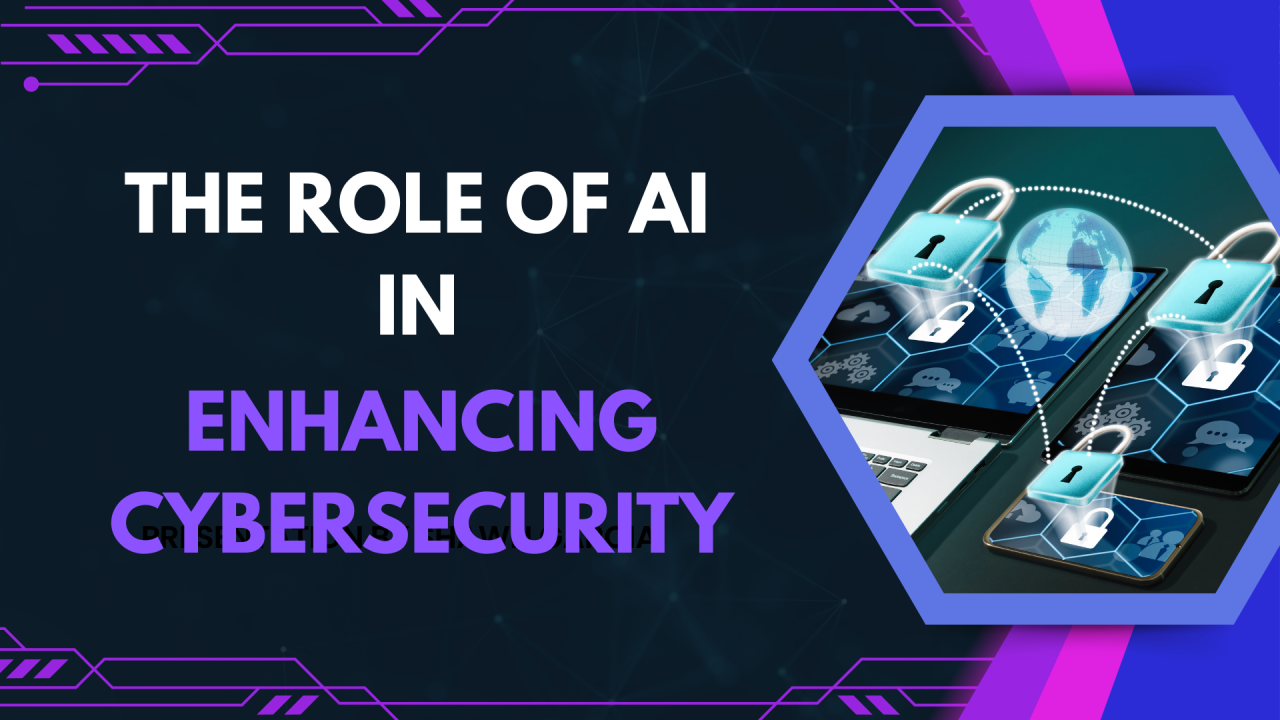The Role of Network Technology in Enhancing Cybersecurity
As cyber threats evolve and become more sophisticated, the role of network technology in enhancing cybersecurity has never been more crucial. Advanced network technologies provide the foundation for robust security measures, helping organizations protect their digital assets and maintain the integrity of their operations. This article explores how network technology supports and enhances cybersecurity, addressing key technologies, strategies, and best practices.

Advanced Threat Detection and Response
Intrusion Detection Systems (IDS): Network technology enables the deployment of Intrusion Detection Systems (IDS) that monitor network traffic for suspicious activities and potential threats. IDS solutions analyze patterns, detect anomalies, and provide alerts when unauthorized access or malicious behavior is detected, allowing for timely response and mitigation.
Intrusion Prevention Systems (IPS): Building on IDS, Intrusion Prevention Systems (IPS) actively block and prevent detected threats from compromising the network. IPS solutions integrate with network infrastructure to automatically respond to threats, such as blocking malicious IP addresses or isolating affected network segments.
Security Information and Event Management (SIEM): SIEM systems aggregate and analyze security data from various sources, including network logs, to provide real-time insights into potential threats. By correlating data from different network components, SIEM solutions enhance threat detection and enable rapid incident response.
Network Segmentation and Access Control
Network Segmentation: Network segmentation involves dividing a network into smaller, isolated segments to limit the spread of potential threats. By creating segmented zones, organizations can contain security breaches and prevent them from affecting the entire network. This approach enhances security by controlling access and minimizing the impact of attacks.
Access Control: Network technology supports various access control mechanisms to ensure that only authorized users and devices can access sensitive resources. Technologies such as role-based access control (RBAC) and attribute-based access control (ABAC) help enforce security policies and restrict access based on user roles and attributes.
Encryption and Data Protection
Data Encryption: Encryption is a fundamental network security technology that protects data in transit and at rest. Network technology facilitates the implementation of encryption protocols, such as TLS (Transport Layer Security) and IPsec (Internet Protocol Security), to secure communications and safeguard sensitive information from unauthorized access.
Virtual Private Networks (VPNs): VPNs create secure, encrypted tunnels for data transmission over public networks. By using VPN technology, organizations can ensure that remote employees and branch offices connect securely to the corporate network, protecting data from interception and tampering.
Advanced Security Protocols and Frameworks
Zero Trust Architecture: The Zero Trust security model operates on the principle of “never trust, always verify.” Network technology supports Zero Trust by implementing continuous authentication, micro-segmentation, and strict access controls. This approach minimizes the risk of insider threats and unauthorized access.
Network Access Control (NAC): NAC solutions manage and enforce security policies for devices attempting to access the network. By assessing the security posture of devices before granting access, NAC helps prevent compromised or non-compliant devices from entering the network and potentially causing harm.
Enhanced Monitoring and Analytics
Network Traffic Analysis: Advanced network monitoring tools analyze traffic patterns and behaviors to identify potential security threats. By examining network flows, organizations can detect anomalies, track malicious activity, and gain insights into potential vulnerabilities.
Behavioral Analytics: Behavioral analytics leverage machine learning and AI to establish baselines of normal network activity. By continuously monitoring deviations from these baselines, organizations can detect and respond to unusual behavior that may indicate a security threat or breach.
Cloud Security and Integration
Secure Cloud Connectivity: As organizations increasingly adopt cloud services, network technology plays a vital role in securing cloud environments. Technologies such as cloud access security brokers (CASBs) and secure cloud gateways help protect data and applications hosted in the cloud by enforcing security policies and monitoring access.
Hybrid and Multi-Cloud Security: Network technology supports security solutions that address the challenges of hybrid and multi-cloud environments. These solutions provide visibility, control, and protection across diverse cloud platforms, ensuring consistent security measures and compliance.
Future Trends and Innovations
Artificial Intelligence (AI) and Machine Learning (ML): AI and ML technologies are transforming network security by enhancing threat detection, prediction, and response. AI-driven security solutions can analyze vast amounts of data, identify patterns, and respond to emerging threats with greater accuracy and speed.
Quantum Encryption: Quantum encryption promises to revolutionize network security by providing theoretically unbreakable encryption methods. As quantum computing advances, quantum encryption will offer new ways to protect sensitive data and ensure secure communications.
5G Security: The rollout of 5G technology introduces new security considerations and opportunities. Network technology must address the unique challenges of 5G, such as increased connectivity and expanded attack surfaces, while leveraging 5G’s capabilities to enhance security measures.
Conclusion
Network technology plays a critical role in enhancing cybersecurity by providing the tools, protocols, and strategies necessary to protect digital assets and ensure secure communications. From advanced threat detection and response to encryption, access control, and cloud security, these technologies enable organizations to safeguard their networks against evolving cyber threats. As network technology continues to advance, it will further strengthen cybersecurity measures, driving innovation and resilience in the face of an ever-changing threat landscape.



